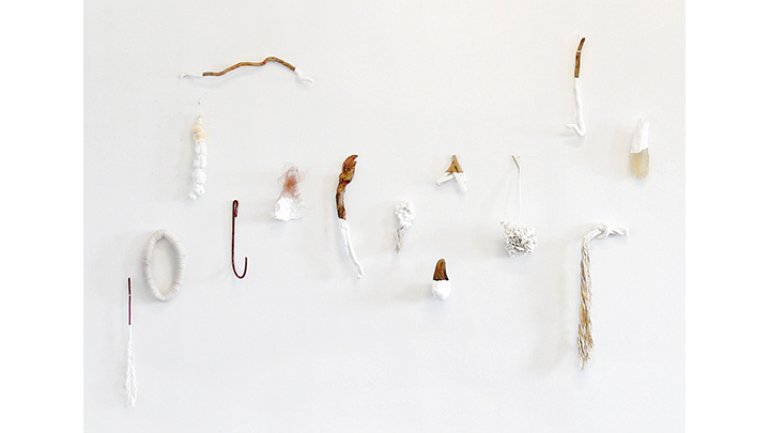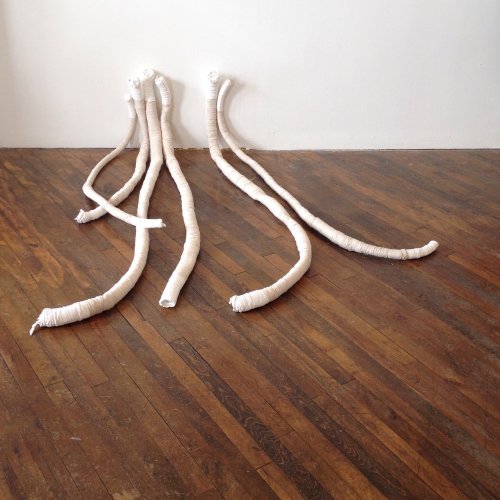On View at ACC: Sarah Kusa
We're excited to have new work by mixed media artist Sarah Kusa on display at the ACC.
Kusa lives in St. Paul, Minnesota, and says of her pieces: "My sculptures and installations are highly improvised projects that explore ideas about vulnerability, resilience, and interdependence. In my abstract forms, I work through questions of connection, protection, survival, and permanence."
Her installation pieces are on view now through the end of August. Please stop in and see them during our office hours. Meanwhile, we asked Kusa to tell us more about her work, her inspiration, and how she came to craft.
What do you make? What do you want to make?
I make mixed-media sculpture and installation works, most often with fiber materials taking center stage. I also print textiles by hand, but I’m not currently exhibiting that work. I want to make work that is increasingly experiential — that can be touched, that moves, and/or that people can go inside. It will be a lifelong challenge.
Who and what inspires you?
On a very intuitive level, there are certain materials that my hands simply gravitate toward: silk, wool, cotton, and linen — to name a few. Visually, I’m always looking at architecture and nature. As far as other artists go, there are so many who inspire me. In general, I’m captivated by artists who do more with less. Eva Hesse’s work is endlessly fascinating to me for her material choices and unusual forms. Janet Echelman and Gabriel Dawe are doing incredible things with fiber as simple strands. I was lucky to see work by both of them this past spring in the exhibition “Wonder” at the Smithsonian’s Renwick Gallery in Washington, DC.
How did you first become engaged with craft?
I have always been a maker, and I remember being a young girl coveting my older brother’s school and camp projects that I wasn’t old enough to make. Looking back, I was immersed in fiber arts early on. My mother, grandmother, and great grandmother all sewed, and I had easy access to fabric scraps and sewing supplies. The first sewing machine I used was my grandmother’s treadle machine. I sewed clothing from time to time, but I wasn’t patient enough to do it without cutting corners. The utility aspect of craft is in my bones, and though I’m not focused on functional work at the moment, the respect for function is always there.
Describe your dream studio…
I have worked in many different spaces: my basement at home, an old church vestry with a fireplace, above shops on a small-town main street, and in my current studio in St. Paul, which is close to perfect with its high ceilings, natural light, and big white walls. Each new space has brought a shift to my work, and that has been instrumental in my art moving forward. Someday I’d love to live in the country and put my studio in a renovated outbuilding, complete with a garden and goats around it. When that happens, everyone will be invited.
What does craft mean to you?
I think of craft in broad terms. To me, craft might or might not involve a particular technique, and it might or might not be aimed toward utility. But in my view, it definitely involves a fascination with process and a kind of reverence for the physical materials that are part of the making.
Library bonus question: What’s your favorite/most-read art or craft book in your personal collection?
I adore the book Fiber: Sculpture 1960 - Present by Jenelle Porter. It's from the exhibition that premiered at the Institute of Contemporary Art, Boston. I saw it in Des Moines last summer. It’s rich with works that are extremely innovative, yet not very well known in art history. It’s impossible for me to look at it and not want to go to my studio immediately.


